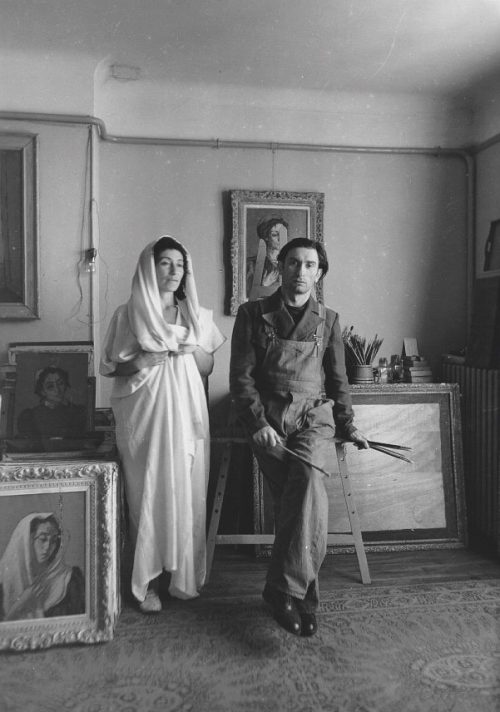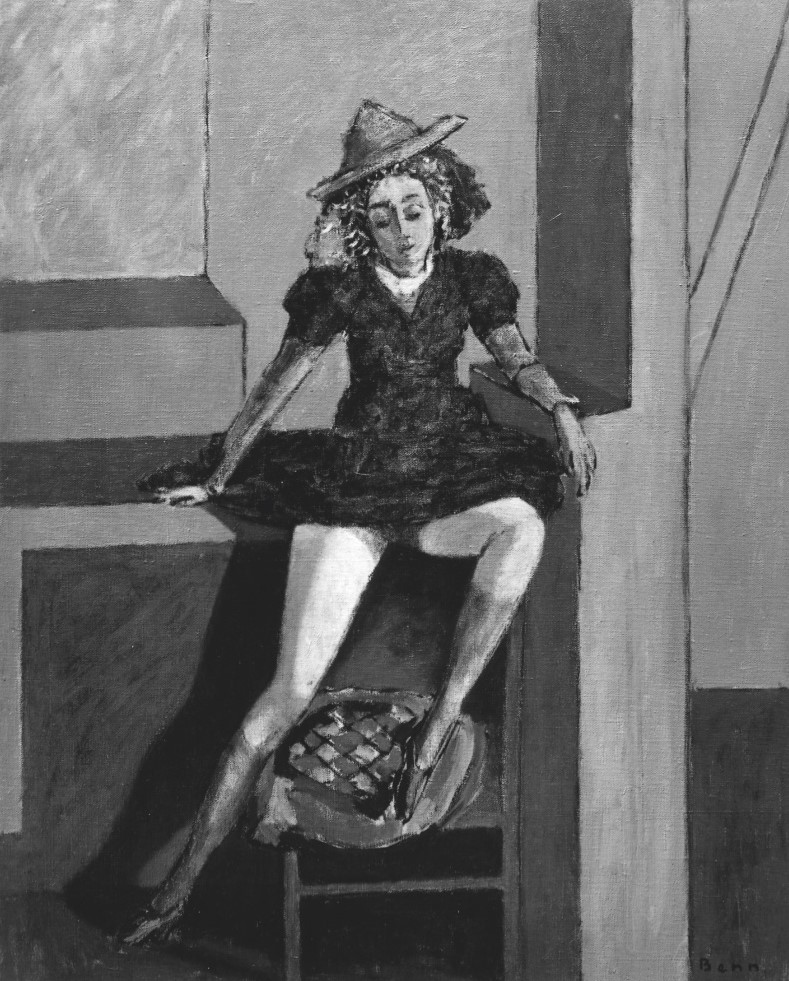Max BAND
January 1, 2019Henryk BERLEWI
January 2, 2019BENN (born Bension Rabinowicz)
BIALYSTOK (POLAND) 1905 – PARIS 1989
Benn grew up in Bialystok where his grandfather was a rabbi and his father worked as an architect. In 1917, Benn, whose nickname was already “the painter,” spent two years in Diatvolo at his father’s sister’s home. He taught drawing to boys his age. Back in Bialystok in 1919, Benn attended an art studio (1922-1924) and decided to establish a painting academy inside his family home. Between 1926 and 1930, the artist devoted himself to theater sets. His first personal exhibition took place in his hometown in 1927.
In 1928, Benn left for Warsaw, enrolled in a studio course and exhibited his work at the Warsaw Exhibition. That same year, he was involved in organizing the Bialystok Winter Exhibition. In 1929, his hometown awarded him a scholarship to study in Paris for three years. He met his future wife Guerra in 1938 and acquired French nationality. In 1930, in Paris, Benn attended the Fernand Léger Modern Academy. His work was based on geometric figures and remained linked to reality.
In 1939, he stayed in Couture, in the Ain department. Mobilized in Brittany and then discharged from service in 1939, he took refuge in Rennes, and kept trying to send his paintings to the Salon d’Automne. At that time, he started sculpting. In 1941, Benn and his wife were interned at the Beaune-la-Rolande camp. They were released thanks to the intervention of Professor Marcel Brule and Lo Duca. Benn went into hiding for twenty-six months during which time he was protected by Jean Paulhan. During the war, he produced small paintings depicting Biblical themes. After the Liberation, Benn returned to Paris where he stayed permanently.
Stories of Jewish Artists of the School of Paris 1905-1939
FRENCH-ENGLISH
Capitale des arts, le Paris des années 1905-1939 attire les artistes du monde entier. De cette période de foisonnement, un terme est resté, celui d'Ecole de Paris, qui recouvre une grande diversité d'expression artistique. Dans ce brassage dont Montparnasse est le creuset, un groupe se distingue : celui des artistes juifs venus de Russie, de Pologne et d'Europe centrale. Si leurs styles sont variés, un destin commun les rassemble : ils fuient l'antisémitisme de leur pays d'origine. Certains ont connu la célébrité dès les années 1920, tels Soutine, Lipchitz ou Chagall. D'autres n'ont pas eu le temps ou la chance d'y accéder. Près de la moitié a péri dans les camps de concentration nazis.
From 1905 to 1939, Paris attracted artists from all over the globe as the capital of the art world. This period of artistic proliferation became known as the School of Paris, and includes a great diversity of artistic expression. Within the teeming art world centred on Montparnasse, one group set itself apart: Jewish artists from Russia, Poland, and Central Europe. Although their styles were diverse, they shared the common fate of fleeing anti-Semitic persecutions in their home countries. Some became famous in the 1920s, such as Soutine, Lipchitz, and Chagall, while others did not have the time or the luck to gain renown. Nearly half of these artists died in Nazi concentration camps.






